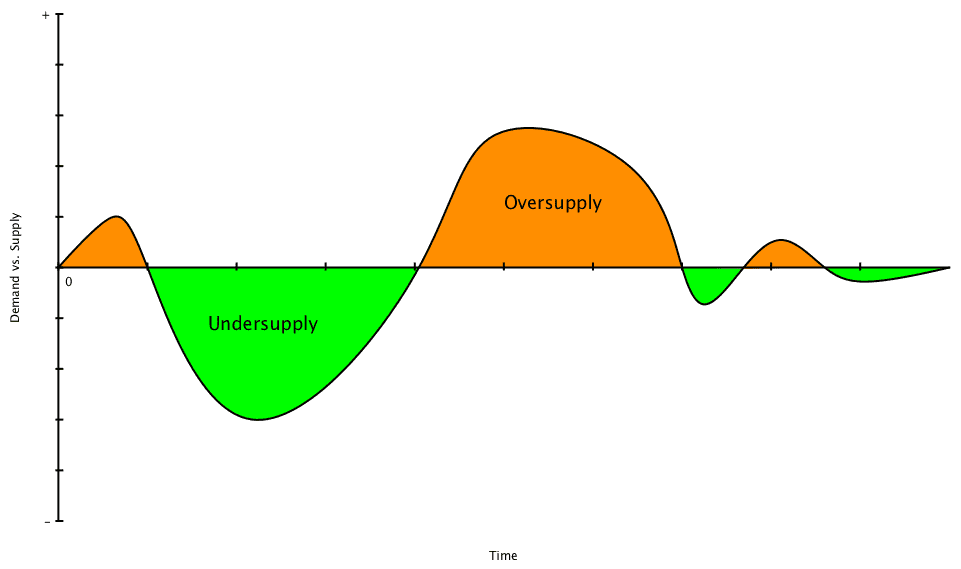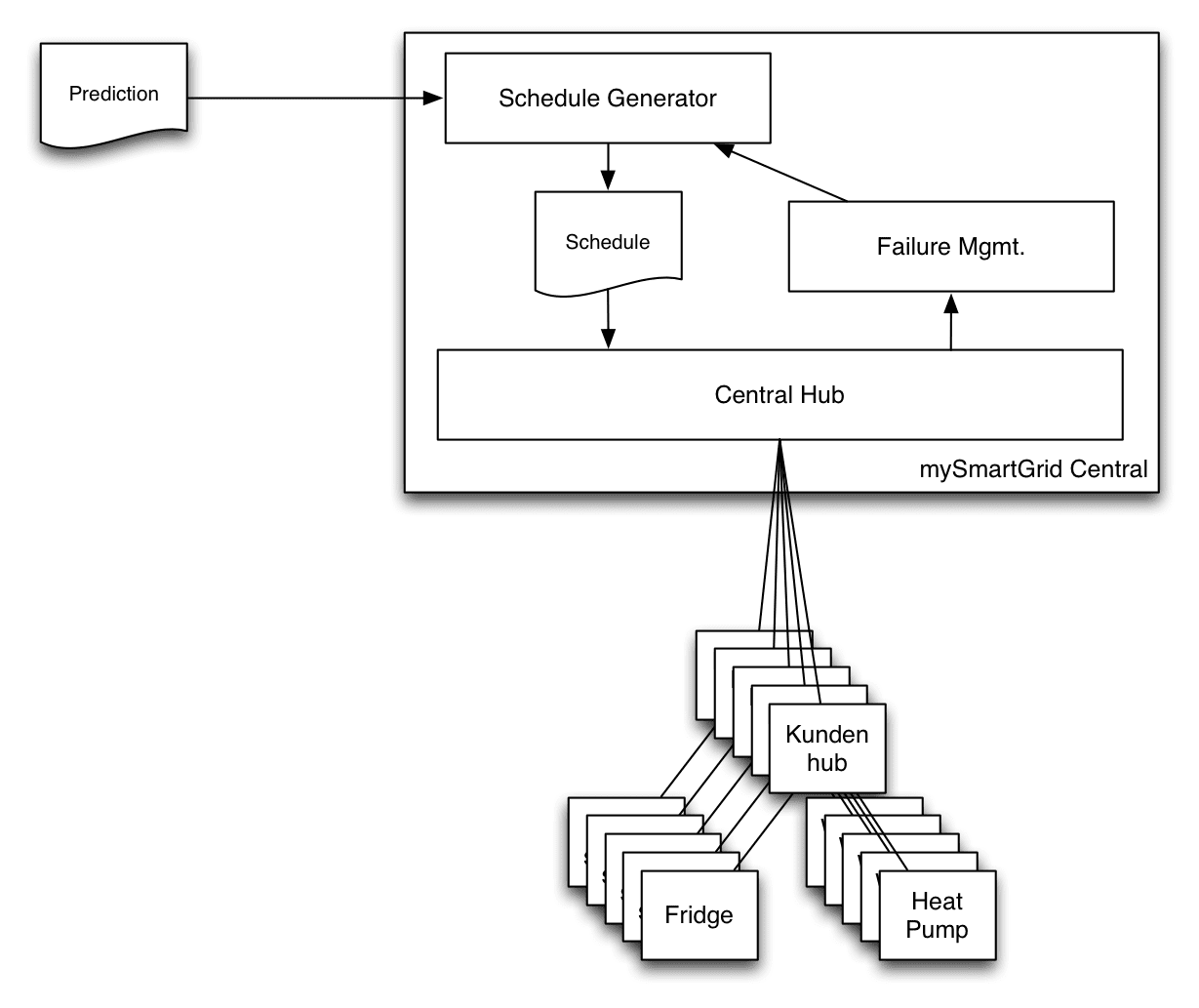
Green energy is good. Finally, people around the world begin to realize that the climate change is a serious problem for mankind. Driving with a car harms the environment – more efficient cars (or electric vehicles) are the new SUVs. On the other hand, a lot of energy is consumed in private households. In Germany, energy-efficient remodeling is rewarded with cheap credits. Often, solar power is used to heat water and generate electricity. More and more wind parks are built which also draw their energy from the sun, indirectly.
Unfortunately, renewable energy source create problems for the conventional power grids. In a power grid, demand and supply of electricity must match at all times. If a consumer draws power from it, the exact amount of power needs to be fed back into the power grid as fast as possible. There is almost no reservoir for electrical power (except for pump storage hydro power plants, but the capacity is limited). Since renewable energy sources such as solar and wind power cannot be planned additional power capacities need to be in place in order to compensate for the lack of power.
In the German research project “mySmartGrid” I am working on another technique to alleviate the erratic nature of these power sources. Instead of adding more production capacity or storage capacity we want to control the demand for power. In addition to the not-enough-power-available problem we currently have another problem: the too-much-power problem. When wind blows over Germany, significant power is generated – whether it is needed or not. Often, wind parks need to be shut down when too much power is generated. This is clearly not desirable from an ecological point of view.
To put it simply: We have either too much energy available, or not enough. It is rare that we have exactly the right amount of energy at our hands. This situation is shown here:

We can influence this only to a certain degree. BUT: We can change the way we consume the energy. For example, think of your fridge: It doesn’t matter whether it draws power now or five minutes later. The temperature change is inert. Thus, it is easy to move the demand – not save any power, but shift the demand for electricity by some time. In other words: switch the fridge of when the supply is short. Then, when the supply exceeds the demand, switch the fridge on again – it will draw more power since the internal temperature was raised. This is what we do:

Of course, this is only the simplified version of what we are doing. In reality, we must ensure that food doesn’t go bad. In addition, controlling a single fridge has almost no impact. But if you aggregate lots of households, the impact can be significant. Heat pumps consume a lot more energy and can be controlled in a similar way. If you can combine lots of households with heat pumps, fridges and freezers, the impact on the demand side is serious.
In the mySmartGrid project we combine up to 1000 households. We intend to control the energy consumption of household appliances as described above. The following picture shows a high-level overview of the architecture:

We combine the predicted power supply information for a period with statistical models of the power consumption of our households. This gives us an understanding when too much energy is available. We create schedules that contain information when a household should maximize its energy consumption. The schedules are then distributed to the households. The so-called “Kundenhub” is currently an iPod which offers a user interface. Household members can always override the schedule we propose.
The iPod uses various mathematical models to determine how to switch appliances on or off. It executes the strategies locally: there is no direct remote control over household appliances. The commands are sent to connectors close to the appliance which then can control the appliance.
This research project contains a lot of challenges – but I save this for another post.
What happens to your theory if CO2 gases that man puts into the air is NOT the reason for “global warming”? We have not seen a statistical warming trend since 1995. I’m all for alternative energy because we must reduce our independence on the oil cartels. However, I also despise the whole political agenda of man-induced “global warming”.
Hi pdadio,
nothing happens to my theory – I only state that demand side management is a way to stabilize the power grid while variable power sources such as wind or photovoltaik are utilized, nothing more. Besides, from my point of view, global warming is not a political agenda. Its a fact, based on the works of a majority of climate researchers. A good summary of their findings was published 2001 within the IPCC Third Assessment, “Summary for Policymakers”. Whether you believe them or not is your choice.
Cheers,
-Mathias